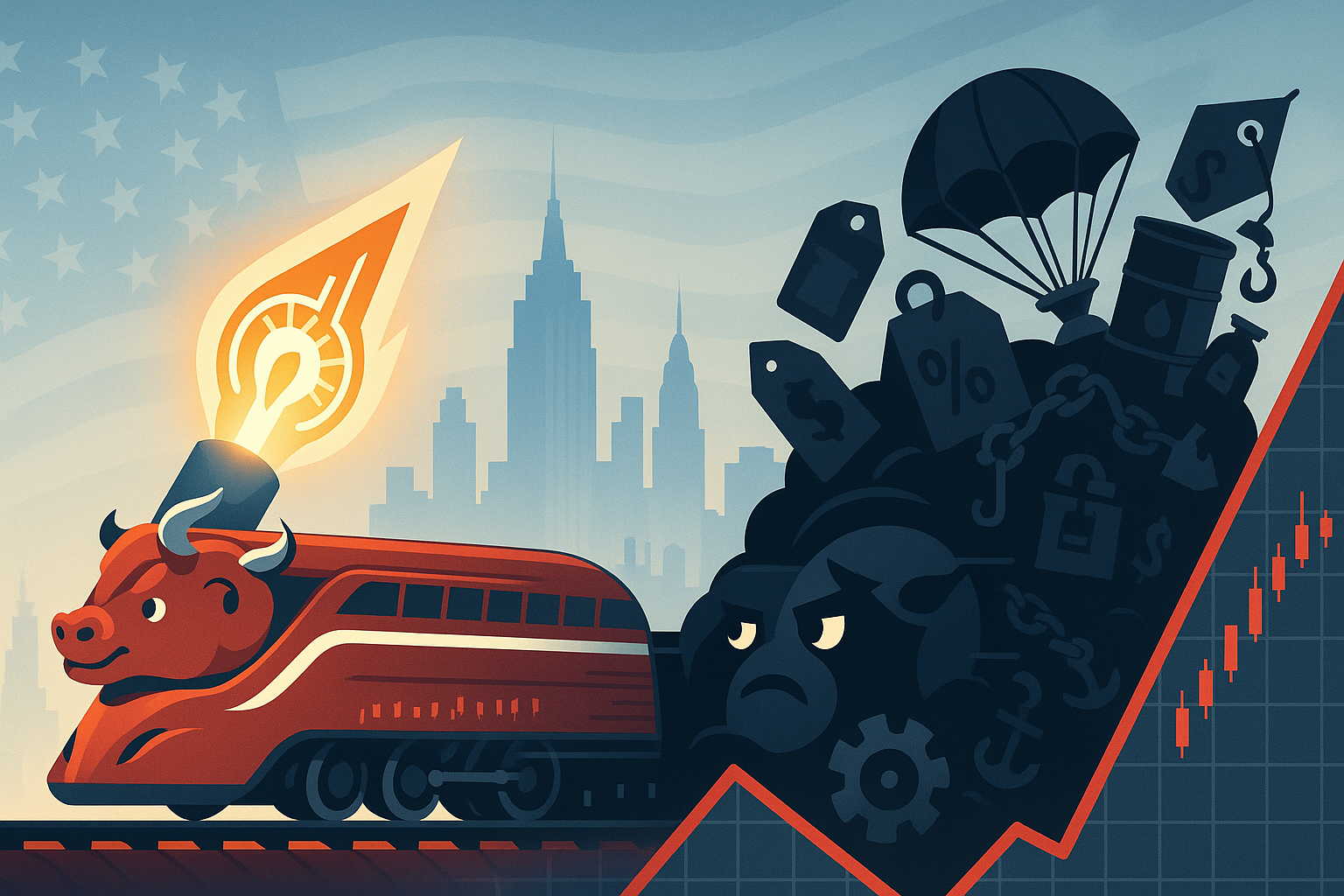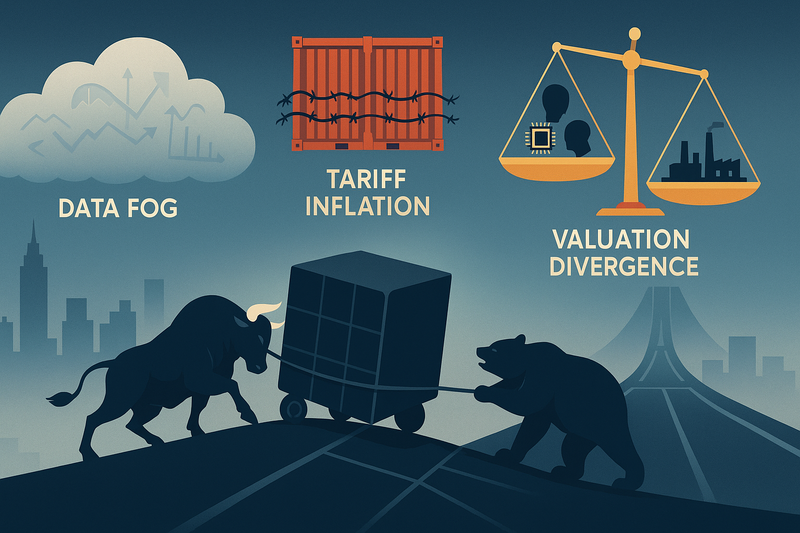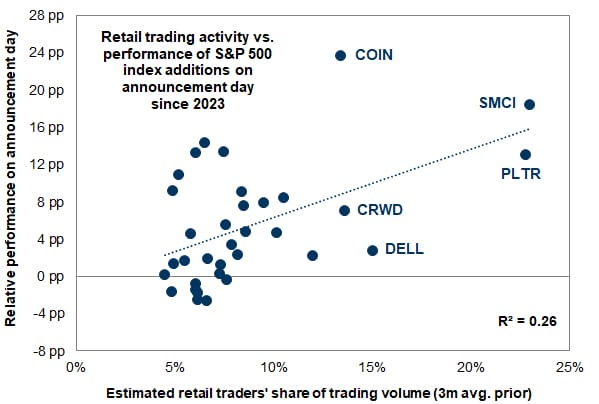The Two-Speed US Market - AI-Driven Growth Masks Underlying Pressures from Soaring Talent and Capital Costs - 双速运行的美股市场:AI驱动的增长掩盖了人才与资本成本飙升的潜在压力
While the AI boom fuels a concentrated market rally, are the escalating costs of talent and capital investment silently eroding the very foundation of future profitability and shareholder returns?

The US Market's Dual Engines: AI Growth and Hidden Cost Pressures
The Earnings Illusion of the AI Boom: Are Surging Costs Eroding the Bedrock of Shareholder Returns?
Currently, the investment fervor ignited by the Artificial Intelligence (AI) revolution is propelling the S&P 500 index forward with unprecedented force. However, behind this feast led by a few tech giants, a fundamental question is emerging: What is the price of this growth? As the market cheers for the immense potential of AI, are the soaring costs of talent and capital investment silently eroding the future profitability of companies and the very bedrock of shareholder returns? This article will delve into this core conflict.
A Two-Speed Market: Hyper-Concentration Driven by AI
The market's overall ascent masks a structural reality: we are in a "two-speed market." As analysis from Citi points out, the rise of the S&P 500 is proceeding along two "parallel paths." One path consists of the Mega Cap Growth cohort related to AI, which appears more resilient to macroeconomic and monetary policy fluctuations. The other path is the rest of the index, whose performance is more influenced by traditional market factors.
The data clearly confirms this. Since July 2024, the performance of the market-cap weighted S&P 500 index has consistently and significantly outpaced its equal-weight counterpart, primarily due to the sustained, strong earnings growth of a few giants within the former. Even after the market correction in April, the rebound's contribution remained highly concentrated in the Technology and Growth sectors.
Market-Cap Weighted S&P 500 vs. Equal-Weight S&P 500 Performance

Source: Citi
A deeper look at the data reveals that the divergence in earnings growth is intensifying. An analysis of the distribution of 2025 earnings per share (EPS) growth expectations for S&P 500 constituents shows that while the index-level growth forecast remains robust, the number of companies with negative earnings growth (the "left tail" of the statistical distribution) did not shrink after the April market rebound; it actually thickened. This indicates that the market's prosperity is driven by a few winners, while more companies are falling behind, creating a narrow, winner-take-all market landscape.
S&P 500 2025E EPS Growth Distribution by Number of Constituents

Source: Citi
The Price of Growth: Soaring Stock-Based Compensation and Capital Expenditures
In this AI arms race, victory is not without cost. Companies are facing two increasingly heavy cost burdens: massive Stock-Based Compensation (SBC) to attract and retain top AI talent, and enormous Capital Expenditure (capex) to build a computational moat.
SBC has become a key lever in the tech giants' talent war. It is essentially a capital allocation decision that, if mismanaged, will directly dilute the value for existing shareholders. Data shows that in the cost structures of companies like Meta Platforms, Inc., Oracle, and Broadcom Inc., the share of SBC is steadily climbing, and its importance may soon become the next focal point for investors, much like capex. It is particularly noteworthy that since the release of ChatGPT in late 2022, the SBC growth rate at these companies has shown a significant acceleration.
Rising Share of Stock-Based Compensation in the Cost Structures of Oracle, Meta, and Broadcom

Source: MS
Meta Platforms, Inc.'s statements on its Q2 2025 earnings call reveal the severity of the issue. The company expects operating expenses (opex) to grow by 20% to 24% in 2025 and warned of "significant upward pressure" on the opex growth rate for 2026. The primary drivers behind this are the sharp increase in depreciation expenses from massive capex and rising employee compensation.
The Capital Trade-Off: A Dilemma Between Investing in the Future and Rewarding Shareholders
High capex and SBC are consuming vast amounts of companies' cash flow, forcing management into a difficult trade-off between "investing in the future" and "rewarding shareholders." Every dollar spent on data center construction and talent incentives is a dollar less available for share buybacks (to offset SBC dilution) or dividend payments.
The case of Microsoft Corp. is highly illustrative. As the company's investment in AI infrastructure continues to grow, its net share repurchases have trended downward. Although Microsoft Corp. currently benefits from its investment in OpenAI, the long-term nature of this partnership (especially post-2030) remains uncertain. If the relationship changes, Microsoft Corp. may need to bear higher costs for in-house R&D, which would further impact its ability to return capital.
MSFT's Net Share Repurchases Decline as Capex Rises

Source: MS
For companies like Oracle, which carry both high dividend commitments and ambitious capex plans, the risk of shareholder dilution is even more pronounced. When the growth in cash flow from operations cannot keep pace with the growth in capital expenditures, SBC, and dividends, the company's financial position will face a severe test.
Looking Ahead: Can Earnings Growth "Broaden Out"?
Faced with the current highly concentrated market structure, investors have pinned their hopes on 2026, when the consensus expectation is that the number of earnings growth contributors will increase, and the negative "left tail" will shrink, achieving a healthier "earnings broadening."
However, this optimistic outlook is not without risk. Even if 2025 earnings slightly beat expectations, the number of companies with negative growth might increase slightly. And if forward earnings estimates are revised downward over time, as they typically are, the number of negative-growth companies will increase further, completely upending the earnings broadening thesis.
S&P 500 2025 EPS Growth Expectations (Consensus, Bottom-Up) Since December

Source: Citi
Ultimately, whether earnings can broaden out depends not only on the development of AI-enabled companies themselves but will also be profoundly influenced by the macroeconomic and policy environment. The Fed's interest rate path, the evolution of inflation, and potential fiscal stimulus policies (such as tax incentives from the possible One Big Beautiful Bill Act) will all be key variables determining the future direction of the market.
Conclusion
Undoubtedly, the AI revolution is unleashing immense productivity and generating considerable returns for leading companies. But behind this technological wave lies massive, real-money investment. Surging talent and capital costs are putting sustained pressure on corporate earnings structures and capital return capabilities. While excited about the vast prospects of AI, investors must prudently assess these "hidden costs." They are critical not only to the long-term value of individual companies but also to determining whether the current AI-driven bull market can evolve from a frenzy for a few giants into a sustainable, market-wide prosperity.





